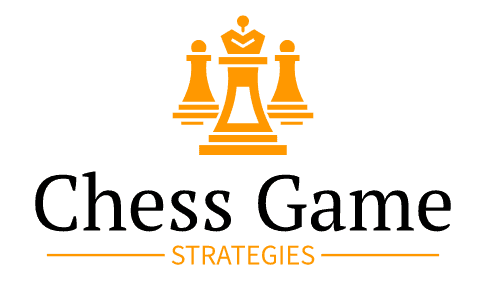
The purpose of an Opening System is to turn seemingly random Opening moves into a more methodical and coordinated sequence, to efficiently develop both Pawns and Pieces, without violating the key principle of Time.
My intention for the Chess Opening Systems guide is to present a selection of versatile Openings that can be quickly learnt and are effective ‘out of the box’.
Opening Systems v. Traditional Openings
The English word ‘System’ has its origins in the Greek word Sýstema, apparently meaning “whole compounded of several parts”.
A more detailed description came courtesy of the World English Dictionary (found on Thesaurus.com):
System: “A group or combination of interrelated, interdependent, or interacting elements forming a collective entity; a methodical or coordinated assemblage of parts, facts, concepts, etc; … a network of communications, transportation, or distribution.”
Contained in that paragraph are a selection of words that help describe the purpose of using Opening Systems:
Instead of moving a Pawn here, or a Piece there, in what seems to be a random order, which is probably how most beginners view the Opening phase; with an Opening System, both Pawns & Pieces are developed as part of a group; positioned in such a way that they interrelate, or interact with one another to form a collective entity, with one part (Pawn / Piece) developed in coordination with another.
Such coordination distributes your army in such a way that it creates your network of communication, enabling the assemblage of Pawns / Pieces to work together, whether for offensive or defensive objectives.
Traditional Openings v. Opening Systems
Traditional Openings, having had centuries to mature and develop, can appear to be made on a whim (even though this is far from the case, in the hands of an experienced chess player – especially at Grandmaster level).
In the early stages, as chess was evolving, moves started out from all possible (i.e. legal) Pawn or Knight options and then, through a natural, gradual process of trial, error, then improvement, certain opening sequences were identified as being superior choices.
These traditional Openings, whether proving to be strong or weak, good or bad, have been studied and documented in bewildering levels of detail; they’ve been sifted through, sorted and catalogued, ready to be learnt by the budding new chess player.
Traditional Openings include lines, variations and sub-variations that develop, for example, from symmetrical opening moves of the center Pawns:
- Classical King Pawn Opening: 1. e4 e5
- Classical Queen Pawn Opening: 1. d4 d5
If you’re interested, I suggest getting familiar with the advanced search form at ChessGames.com, which helps you slice through their database containing over half-a-million Grandmaster games that feature the most popular, traditional Openings (all played properly!). Also, because they’re played by Grandmasters, you’ll discover which sorts of traditional Openings are the good ones, and worth studying further!
The evolution of such well-known, traditional Openings, has probably developed like the evolution of actual fighting:
First, fists were probably used, aiming punches to an opponent’s head and torso …
Then arms were used to block attacks to the upperbody …
Then kicks used to improve the attacker’s reach, as well as adding power to the hits …
Eventually, once all limbs had been tried, fighters had to evolve to use them in combinations, to thwart an ever-evolving knowledge of hand-to-hand combat.
But, there is the problem with traditional methods: while highly effective once learnt (as Steven Seagal will now demonstrate), it takes committed, long-term study and practice to become competent in a fighting situation.
Definitely, the earlier one can acquire these skills, the better they’ll be able to deal with situations if things get a bit fighty … however, what if you’ve left it till later in life to learn how to handle yourself in a fight?
That’s where a modern fighting system reigns supreme: they’re quick to learn and still highly effective in practical combat situations.
Should I bother with Traditional Openings?
I see similarities between learning Chess Openings and learning a traditional martial art versus a modern fighting system. For instance:
-
- Traditional martial arts, such as Aikido or Shotokan Karate, require long hours of practice and intense levels of training to build-up muscle memory in order to properly learn the intricate, subtle details of punching, kicking, blocking, and movement that make the moves so potent … and it’s the same with traditional Chess Openings.
-
- ‘Fighting Systems’, on the other hand, such as Krav Maga or the Keysi Fighting Method, focus more on a person’s ‘natural instincts’ to overcome their opponent; blocks, punches, kicks, etc., feel more in tune with how the body moves, which, in turn, makes these fighting systems quicker to learn … so it is with Chess Opening Systems.
Ken Wilsdon raised an interesting point when commenting on a Checkmate Opening victory for Black, from the Grunfeld Defence: “Most lines are VERY theoretical, and some variations have been mapped out to 20 moves or more. You can’t just play it on basic theory, or you will get crushed.”
In other words, if you come up against a player who has had his/her head lodged in the appropriate books, of a specific Opening repertoire, they may be able to instantly lead you down any number of blind alleyways, which may lead to some unpleasant Pitfalls or Traps.
Or, if they’ve studied with the mindset of Grandmaster and the eighth World Chess Champion, Mikhail Tal, they may be prepared enough that they can take you “into a deep dark forest where 2+2=5, and the path leading out is only wide enough for one.”
The best way to combat the vast majority of your opponents is to begin by learning a selection of versatile opening systems and “take your opponent out of the book”. See, if you’re not bound by a specific opening repertoire, learned ‘off by heart’ to the nth ply, your moves become fluid.
Bruce Lee said it best … This is what it is: “…be water, my friend”.
So, does all that mean not to bother learning traditional Openings?
Not at all. I think it depends more on what stage of your life your start getting interested in learning to play chess … If you’re at a very young age (e.g. 7-12 years, if you agree with Jean Piaget), you have plenty of time on your side to begin a methodical study of the traditional Openings, as one might take to studying Aikido, for instance.
However, if like me, you’ve left it until your mid-to-later years to learn chess, and you want to get up to speed quickly, then, in my opinion, that’s where getting started with Opening Systems makes more sense, as, in my experience, you stand a greater chance of making it through to the Middlegame phase, with your army largely intact …
From that point on, you can begin “joining the dots” between knowledge of Opening Strategy (that is, how to coordinate your Pawns and Pieces for efficient development in the Opening phase), with Chess Tactics, which take advantage of short-term opportunities that often present themselves during the main battle.
Once you’ve found your feet, metaphorically, then, if you wish, you can begin studying the traditional Openings, in parallel with your ever-growing, practical knowledge of how to play chess.
I just feel, if you’re semi-impatient to get going and try and do it the other way round, by attempting to learn the traditional Openings, without appreciating the dedicated study that’s required … you may overwhelm yourself and quit before you realize you can get good at Chess.




